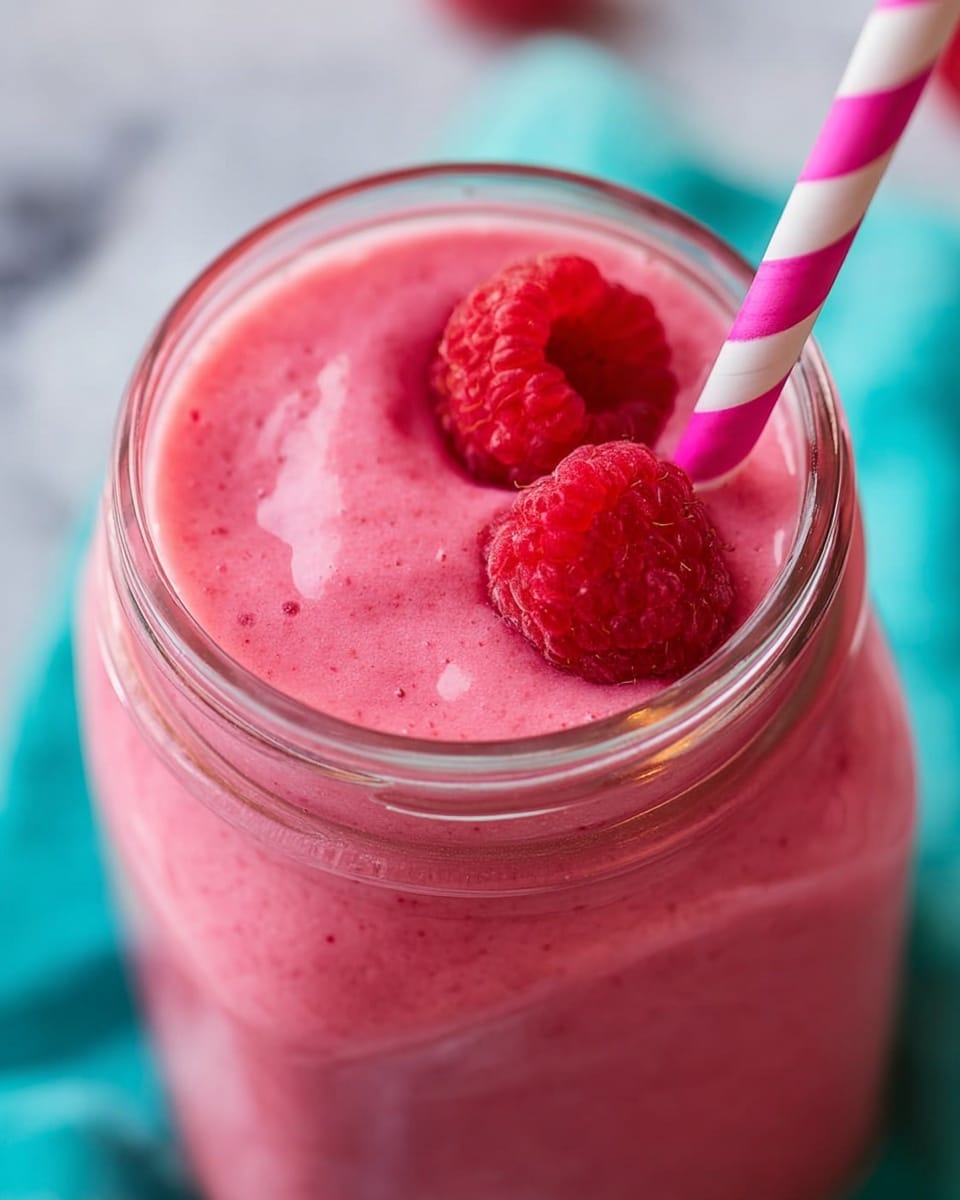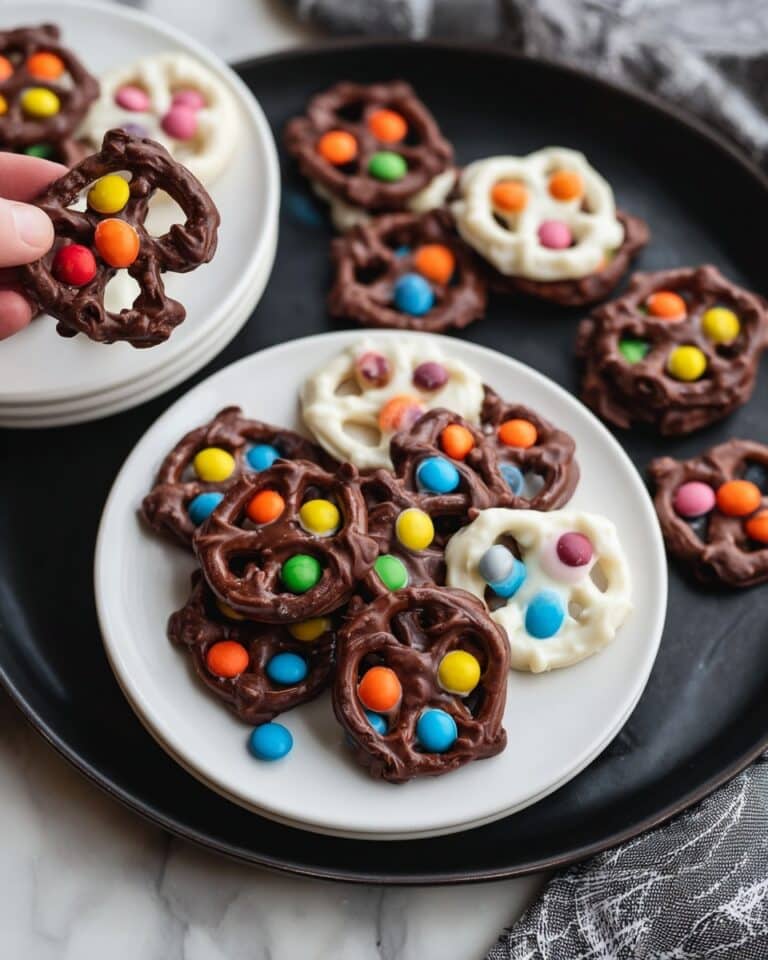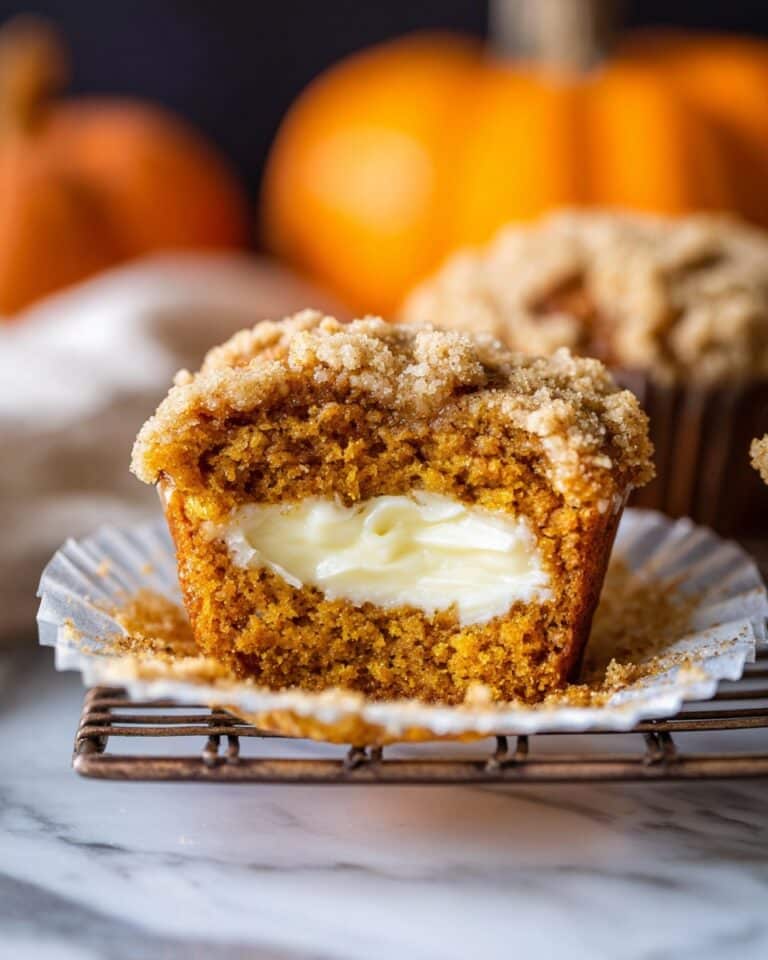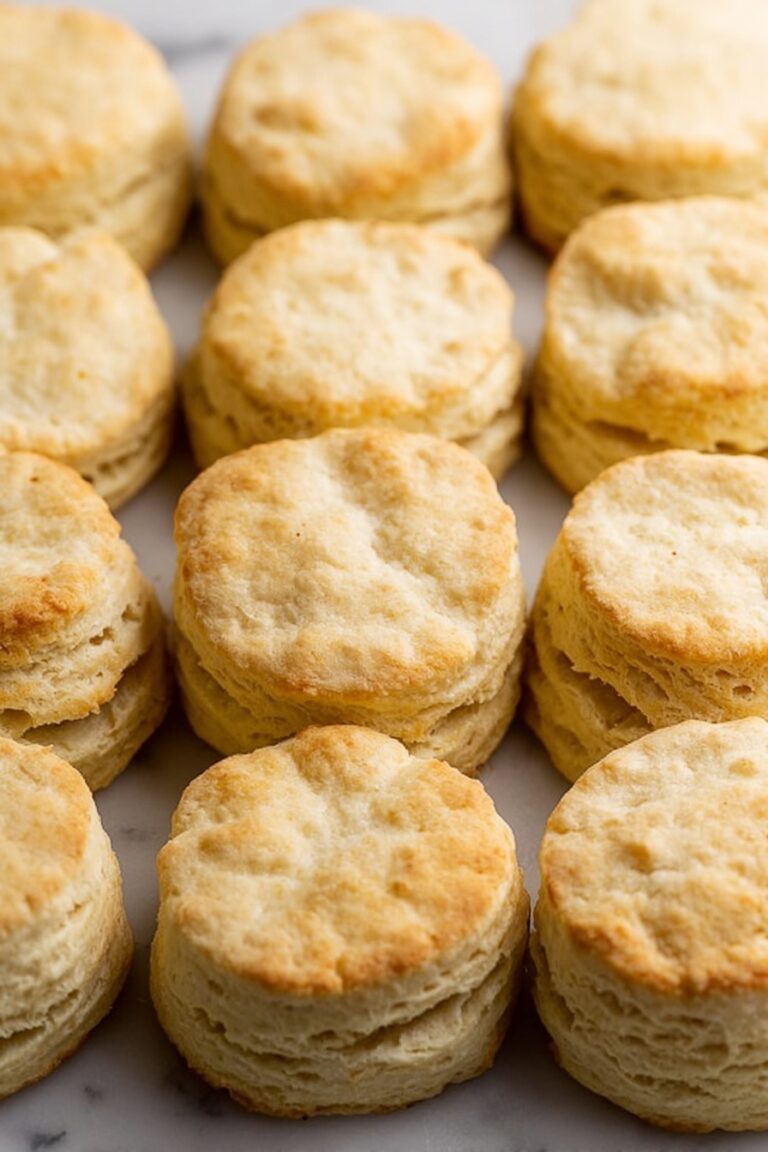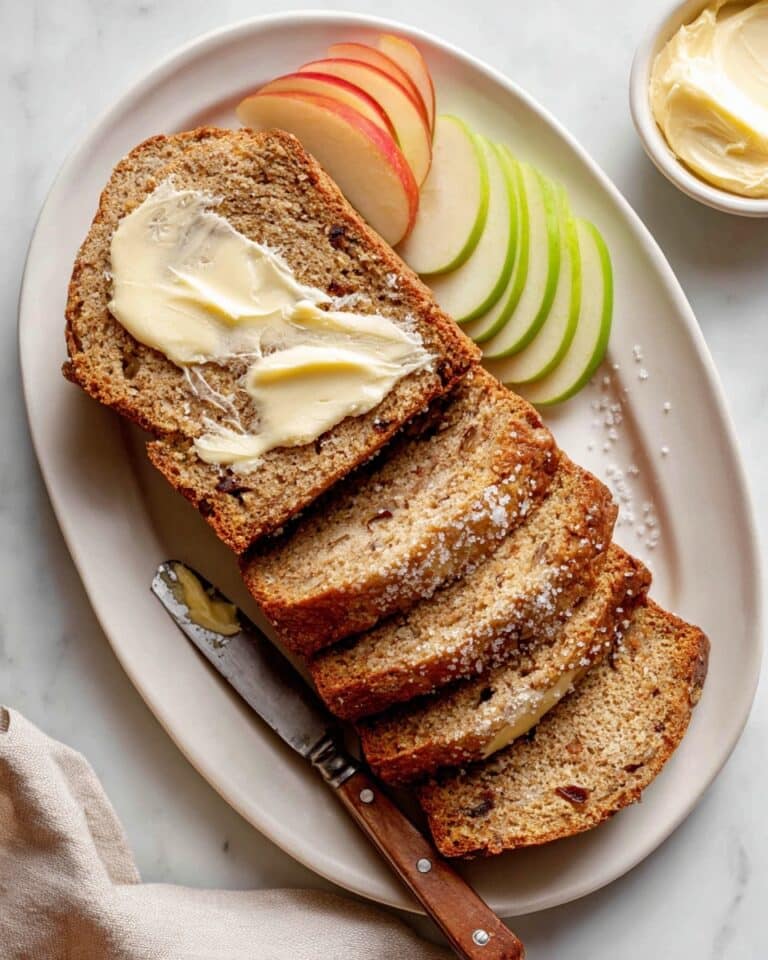Raspberry Peanut Butter Smoothie Recipe
If you’re looking for a smoothie that’s both satisfying and refreshing, the Raspberry Peanut Butter Smoothie Recipe is exactly what you need. It hits that perfect balance between fruity tartness and nutty richness, making it one of my favorite go-to recipes for breakfast or an afternoon pick-me-up. Plus, it’s super quick to whip up, so it’s perfect when time’s tight but you still want something wholesome.
What I love most about this Raspberry Peanut Butter Smoothie Recipe is how versatile it feels—you get the antioxidants from raspberries, protein from peanut butter and Greek yogurt, and the creaminess from banana that makes it taste indulgent without any guilt. Trust me, whether you’re rushing out the door or craving a nutritious treat, this recipe will not disappoint.
Why This Recipe Works
- Balanced Flavors: The tart sweetness of raspberries contrasts beautifully with the creamy, nutty peanut butter for a complex yet smooth taste.
- Nutritious Boost: Greek yogurt and peanut butter pack in protein and healthy fats, keeping you full longer without needing added sugars.
- Simple & Quick: With just a handful of ingredients and minimal prep, you can have this smoothie ready in 5 minutes flat.
- Flexible Texture: Adding ice water allows customization—from thick and creamy to light and refreshing depending on your preference.
Ingredients & Why They Work
Each element in this Raspberry Peanut Butter Smoothie Recipe plays a role in texture, flavor, and nutrition, making it more than just a simple blended drink. Here’s why I love using these specific ingredients and a few tips to get the best results at the store.

- Frozen raspberries: Their natural tartness brightens up the smoothie, and freezing means you don’t need ice, which can dilute the flavor.
- Banana: Adds creaminess and natural sweetness without overpowering the raspberries; ripe bananas work best for flavor.
- Peanut butter: Use natural, unsweetened peanut butter for that rich nutty flavor and added protein without excess sugar.
- Plain Greek yogurt: Thickens the smoothie while contributing probiotics and a protein boost to keep you feeling full.
- Ice water: Helps adjust thickness and chill your smoothie without extra calories or altering flavors.
- Fresh raspberries (optional): Perfect for garnish to add visual appeal and an extra burst of freshness.
Make It Your Way
I’m all about customizing my drinks, and this Raspberry Peanut Butter Smoothie Recipe lends itself well to tweaks. Whether you want it sweeter, thicker, or packed with greens, there are simple ways to tailor it so it suits your taste buds perfectly.
- Variation: I sometimes swap peanut butter for almond or cashew butter when I want a slightly different nutty flavor. Each one gives it a unique twist that’s equally delicious.
- Dietary modification: If you’re dairy-free, try a plant-based yogurt like coconut or almond yogurt—it works surprisingly well!
- Boost it up: Add a handful of spinach or kale for extra nutrients; the berries mask any bitterness, so don’t be shy with greens.
- Seasonal swap: In warmer months, fresh raspberries (instead of frozen) make the smoothie bright and light, perfect when you don’t want anything too heavy.
Step-by-Step: How I Make Raspberry Peanut Butter Smoothie Recipe
Step 1: Gather Fresh and Frozen Ingredients
I like to lay everything out before I start—the frozen raspberries, banana piece, peanut butter, Greek yogurt, and ice water. This makes the process smoother, especially if you’re juggling other morning tasks. Make sure your frozen raspberries are solid, and your banana is ripe but not overly mushy for the best texture.
Step 2: Blend Until Silky Smooth
Pop all the ingredients into your blender and pulse a few times before running it fully. This helps break down the thick stuff early on. Blend on high for about 30-45 seconds. I usually pause and scrape down the sides once or twice because raspberries can get caught up, and you want every bite smooth and creamy!
Step 3: Adjust Thickness and Sweetness
If you find your smoothie too thick, add a splash more ice water and blend again. Prefer it sweeter? A tiny drizzle of honey or maple syrup can work wonders here, but I usually skip it thanks to the banana’s natural sweetness. This step is all about making it perfect for your taste.
Step 4: Pour, Garnish, and Enjoy
Pour your smoothie into your favorite glass and, if you’re feeling fancy, sprinkle fresh raspberries on top. I love this little touch—it adds texture and looks beautiful, plus it’s an extra burst of berry flavor as you sip.
Tips from My Kitchen
- Use Frozen Fruit for Texture: Frozen raspberries double as the chilling agent so you don’t need bulky ice that waters down flavor.
- Banana Ripeness Matters: The riper the banana, the sweeter and creamier your smoothie will be naturally—no added sugars needed.
- Scrape the Blender Sides: I can’t stress this enough—stopping to scrape helps blend everything evenly and avoids chunks of peanut butter or berries.
- Ice Water Not Just for Cooling: Adding ice water lets you control thickness without diluting flavor like crushed ice would.
How to Serve Raspberry Peanut Butter Smoothie Recipe
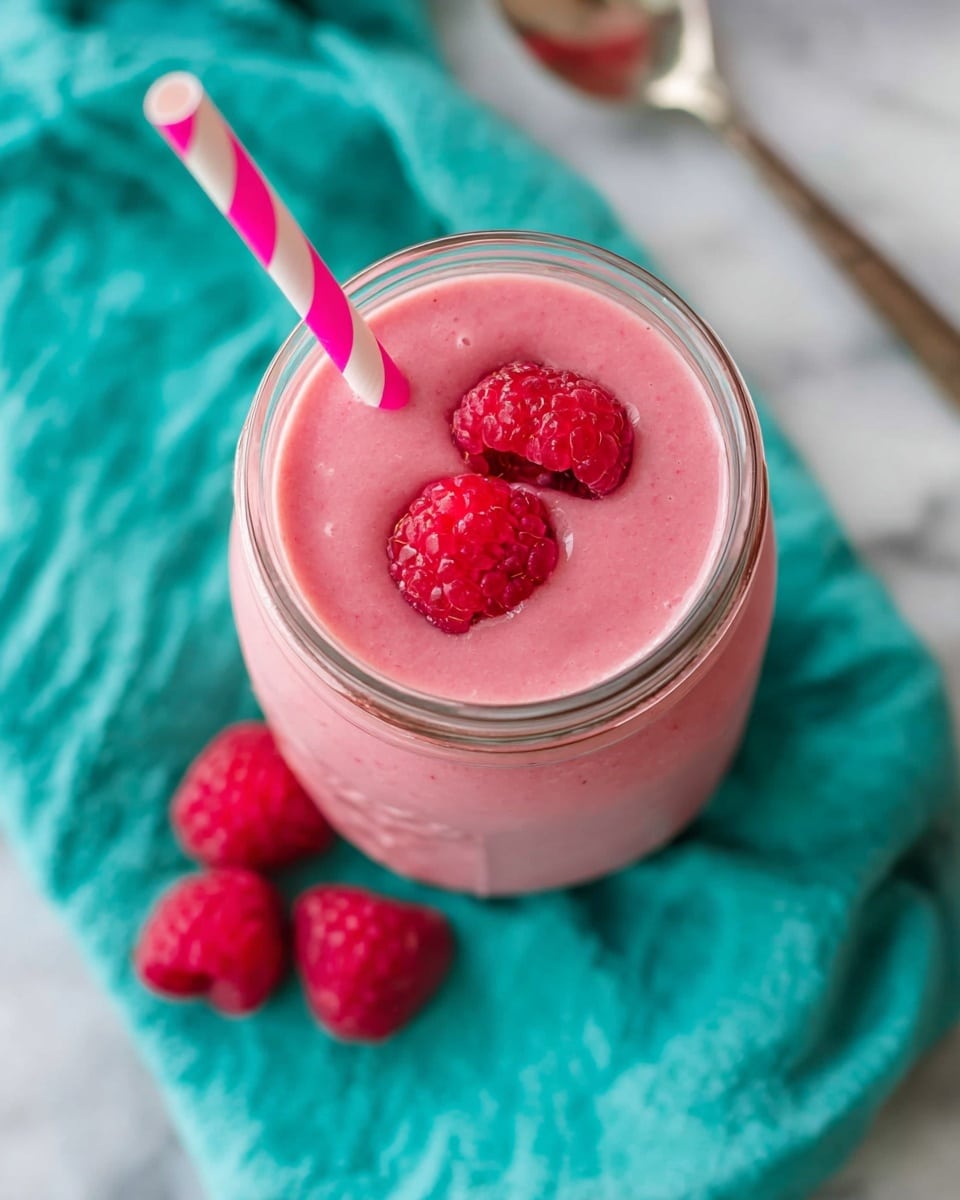
Garnishes
I’m a big fan of topping my Raspberry Peanut Butter Smoothie Recipe with a few fresh raspberries or a light dusting of chia seeds for crunch and nutrition. If you want an extra nutty hint, sprinkle some crushed peanuts or even a little cocoa nibs—they add texture and make the smoothie feel extra special.
Side Dishes
This smoothie pairs wonderfully with a slice of hearty whole grain toast or a warm oatmeal muffin if you’re eating it for breakfast. For a light snack, crunchy veggies or a boiled egg complement the protein and keep your energy steady.
Creative Ways to Present
For a fun brunch or gathering, serve your Raspberry Peanut Butter Smoothie Recipe in mason jars with cute striped straws and label each jar with tags. You can even layer it with granola or sliced fruit in clear glasses for a parfait effect that delights both eyes and taste buds.
Make Ahead and Storage
Storing Leftovers
If you happen to make extra (which might happen because you want more!), store leftover smoothie in an airtight container or mason jar in the fridge. Enjoy within 24 hours for the freshest flavor and best texture—just give it a quick stir before drinking.
Freezing
I’ve frozen this smoothie in ice cube trays before, which is perfect for portion control and to use later in smoothies or as a cold snack. When ready, just blend the frozen cubes with a touch of almond milk or water to recreate the smoothie texture.
Reheating
This smoothie is best enjoyed cold, so reheating isn’t really in the cards. Instead, if you prefer something warm, blend it fresh or try warming up a banana peanut butter drink separately for that cozy creamy feel.
FAQs
-
Can I use fresh raspberries instead of frozen in this Raspberry Peanut Butter Smoothie Recipe?
Absolutely! Fresh raspberries will give you a lighter and more refreshing smoothie, though you might want to add some ice cubes to achieve that chilled, thick texture that frozen berries naturally provide.
-
Is this Raspberry Peanut Butter Smoothie Recipe suitable for someone with nut allergies?
Since peanut butter is a key ingredient, it’s not suitable for those with nut allergies. However, you could try substituting it with seed butters like sunflower seed butter for a similar creamy texture without nuts.
-
Can I make this smoothie ahead of time and keep it overnight?
Yes, you can store your prepared smoothie in a sealed container in the fridge overnight. Just give it a good stir or shake before drinking, as some separation is normal.
-
How can I adjust the sweetness of this Raspberry Peanut Butter Smoothie Recipe?
The banana provides natural sweetness, but if you prefer it sweeter, add a small amount of honey, agave syrup, or maple syrup while blending. Alternatively, using a riper banana naturally increases sweetness without added sugar.
-
What if I don’t have Greek yogurt on hand?
You can substitute plain Greek yogurt with regular yogurt, cottage cheese, or even a dairy-free yogurt alternative to maintain creaminess and protein content in the smoothie.
Final Thoughts
I honestly can’t say enough good things about this Raspberry Peanut Butter Smoothie Recipe—it’s one of those simple pleasures you can make any time and always feel like you’re treating yourself to something special. Whether you’re a smoothie newbie or a seasoned blender fan, give this recipe a try and tweak it until it’s your perfect cup of yum. You’ll love how easy it is to make your mornings a little brighter and your snack times a whole lot tastier.
Print
Raspberry Peanut Butter Smoothie Recipe
- Prep Time: 5 minutes
- Cook Time: 0 minutes
- Total Time: 5 minutes
- Yield: 1 serving
- Category: Beverage
- Method: Blending
- Cuisine: American
- Diet: Vegetarian
Description
A delicious and creamy Raspberry Peanut Butter Smoothie blending frozen raspberries, banana, peanut butter, and Greek yogurt for a nutritious and filling treat perfect for breakfast or a snack.
Ingredients
Smoothie Ingredients
- 1 1/2 cups frozen raspberries
- 2 inches banana
- 2 tablespoons peanut butter
- 1/4 cup plain Greek yogurt
- 6 tablespoons ice water
- Fresh raspberries to garnish (optional)
Instructions
- Add Ingredients to Blender. Place the frozen raspberries, banana piece, peanut butter, plain Greek yogurt, and ice water into a blender.
- Blend Until Smooth. Blend all ingredients together until smooth and creamy, stopping to scrape down the sides as needed to ensure even blending.
- Serve. Pour the smoothie into a glass, garnish with fresh raspberries if desired, and enjoy immediately.
Notes
- Use frozen raspberries to achieve a chilled, smoothie-like texture without adding ice cubes.
- Peanut butter can be substituted with almond butter for a different nutty flavor.
- Adjust the ice water quantity to reach your preferred smoothie consistency.
- The banana piece can be increased for extra natural sweetness.
- Greek yogurt can be replaced with a dairy-free yogurt to make this recipe vegan-friendly.
Nutrition
- Serving Size: 10 ounces
- Calories: 280 kcal
- Sugar: 18 g
- Sodium: 90 mg
- Fat: 15 g
- Saturated Fat: 3 g
- Unsaturated Fat: 12 g
- Trans Fat: 0 g
- Carbohydrates: 27 g
- Fiber: 6 g
- Protein: 10 g
- Cholesterol: 10 mg

